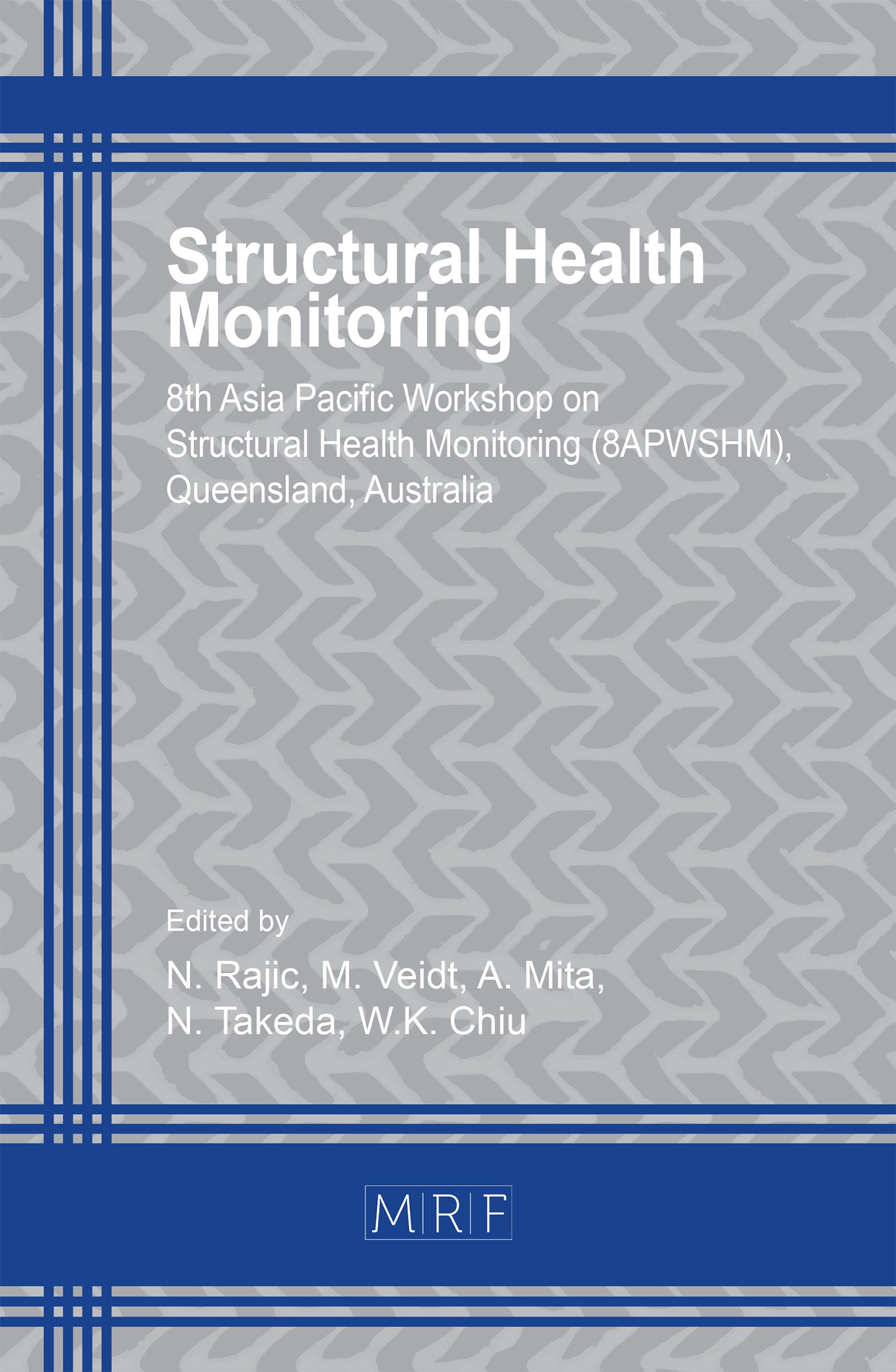Development of Scum Geometrical Monitoring Beneath Floating Covers Aided by UAV Photogrammetry
Leslie Wong, Benjamin Steven Vien, Yue Ma, Thomas Kuen, Frank Courtney, Jayantha Kodikara, Francis Rose, Wing Kong Chiu
download PDFAbstract. Floating covers are used on anaerobic lagoons at waste-water treatment plants for odour control and the harvesting of biogas. Scum is an unwanted by-product of the anaerobic digestion of raw sewage. This matter can form into a large mass of material, and when it floats to the surface and solidifies, it is called a scumberg to differentiate it from the scum which may still be in a semi-solid state. Given the continual inflow of raw sewage into the lagoon, the potential movement of the scum can deform the floating cover. One of the challenges pertaining to the structural health assessment of the floating cover hinges upon the difficulty in monitoring the development and geometrical profile of scum underneath the cover. The current measurement of scum requires the inspector to physically access the scum either from multiple discrete access ports within the floating cover or by using highly-skilled divers in the lagoon. In collaboration with Melbourne Water, a non-contact UAV-aided photogrammetry technique has been deployed to quantify the development of scum underneath the cover. It is shown that the digital elevation model obtained from photogrammetry correlates well with direct laser based measurements of elevation, and that cluster analysis can be used in conjunction with the digital elevation model to estimate the qualitative hardness level of the scum beneath the cover, thereby providing a viable alternative to time-consuming walk the cover type inspections. It is also shown that the total scum depth as predicted from the digital elevation model correlates well with the measurements taken through the access ports. This method could be a more effective alternative to current practice.
Keywords
Remote Sensing, Structural Health Monitoring, Non-Contact Inspection, UAV Photogrammetry, HDPE Membrane, Floating Cover, Scums, Sewage Treatment
Published online 2/20/2021, 11 pages
Copyright © 2021 by the author(s)
Published under license by Materials Research Forum LLC., Millersville PA, USA
Citation: Leslie Wong, Benjamin Steven Vien, Yue Ma, Thomas Kuen, Frank Courtney, Jayantha Kodikara, Francis Rose, Wing Kong Chiu, Development of Scum Geometrical Monitoring Beneath Floating Covers Aided by UAV Photogrammetry, Materials Research Proceedings, Vol. 18, pp 71-78, 2021
DOI: https://doi.org/10.21741/9781644901311-9
The article was published as article 9 of the book Structural Health Monitoring
![]() Content from this work may be used under the terms of the Creative Commons Attribution 3.0 licence. Any further distribution of this work must maintain attribution to the author(s) and the title of the work, journal citation and DOI.
Content from this work may be used under the terms of the Creative Commons Attribution 3.0 licence. Any further distribution of this work must maintain attribution to the author(s) and the title of the work, journal citation and DOI.
References
[1] MelbourneWater, “Sewage Treatment process at Western Treatment Plant,” Melbourne Water, 30 October 2019. [Online]. Available: https://www.melbournewater.com.au/water-data-and-education/learning-resources/water-and-sewage-treatment-plants/western-treatment-0 [Accessed December 2019].
[2] Ong,W., Chiu, W.K., Kuen, T. and Kodikara, J., “Determination of the state of strain of large floating covers using unmanned aerial vehicle (UAV) aided photogrammetry,” Sensors, vol. 17, p. 1731, 2017. https://doi.org/10.3390/s17081731
[3] Eisenbeiss, H. and Sauerbier, M., “Investigation of UAV systems and flight modes for photogrammetric applications,” Photogrammetric Record, vol. 26, pp. 400-421, 2011. https://doi.org/10.1111/j.1477-9730.2011.00657.x
[4] Wong, L., Courtney, F., Vien, B., Kuen, T., Douglas, P., Ma, Y., Kodikara J. and Chiu, W. K., “Structural Assessment of Large Membrane Structures using an Unmanned Aerial Vehicle aided Photogrammetry: Determination of Flight Parameters and Trials at the Western Treatment Plant,” Journal of Nondestructive Evaluation, Diagnostics and Prognostics of Engineering Systems, vol. 2, no. 040902, pp. 1-8, 2019. https://doi.org/10.1115/1.4044637
[5] Chiu, W. K., Ong, W., Kuen, T., and Courtney, F. “Large structures monitoring using unmanned aerial vehicles,” Procedia Engineering. 6th Asia Pacific Workshop on Structural Health Monitoring (APWSHM), vol. 188, pp. 415-423, 2017. https://doi.org/10.1016/j.proeng.2017.04.503
[6] DJI, Matrice 600 PRO User Manual V1.0, DJI, 2018.
[7] Pix4D, “Pix4Dcapture,” Pix4D S.A., 2019. [Online]. Available: https://www.pix4d.com/product/pix4dcapture. [Accessed December 2019].
[8] Agisoft, Agisoft Metashape User Manual: Professional Edition, Version 1.5, www.agisoft.com, 2019.
[9] Barazzetti, L., Forlani, G., Remondino, F., Roncella, R., and Scaioni, M., “Experiences and achievements in automated image sequence orientation for close-range photogrammetric projects,” in Proceedings SPIE 8085, Videometrics, Range Imaging and Applications XI, 80850F, Munich, May 2011. https://doi.org/10.1117/12.890116
[10] Westoby, M., Brasington, J., Glasser, N., Hambrey, M., and Reynolds, J., “Structure-from-motion photogrammetry: a low-cost, effective tool for geoscience applications,” Geomorphology, vol. 179, pp. 300-314, 2012. https://doi.org/10.1016/j.geomorph.2012.08.021
[11] Triggs, B., Zisserman, A., and Szeliski, R., “Bundle adjustment. A modern synthesis, Vision Algorithms: Theory and Practice.,” in Proceedings of International Workshop on Vision Algorithms, September 1999, Springer-Verlag, 2000. https://doi.org/10.1007/3-540-44480-7
[12] MathWorks, “K-means clustering based image segmentation (imsegkmeans),” 2018. [Online]. Available: https://au.mathworks.com/help/images/ref/imsegkmeans.html. [Accessed 2020].
[13] Ma, Y., Wong, L., Vien, B., Kuen, T., Kodikara, J., and Chiu, W.K., “Quasi-active thermal imaging of Large Floating covers using ambient solar energy,” Remote Sensing, vol. 12, p. 3455, 2020. https://doi.org/10.3390/rs12203455































